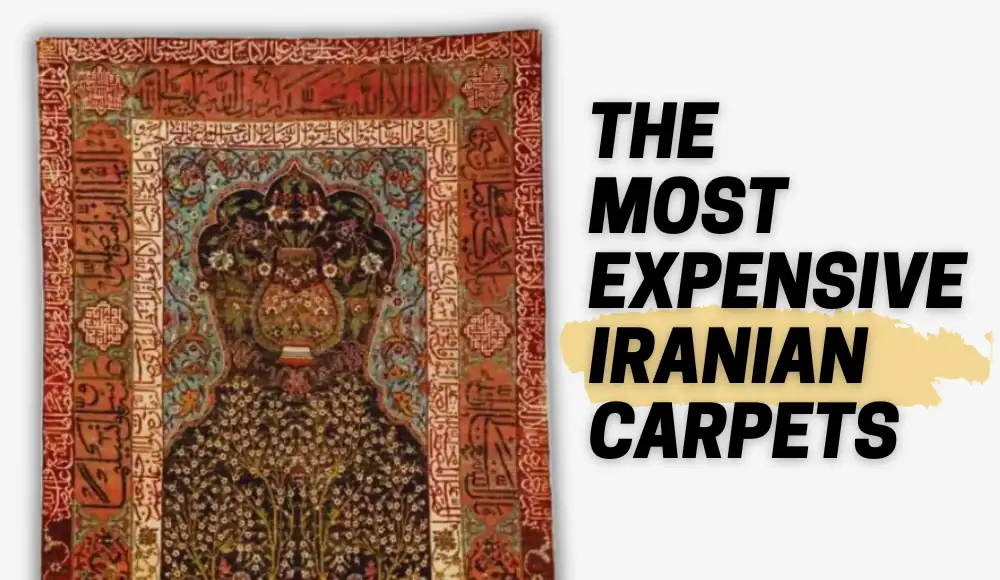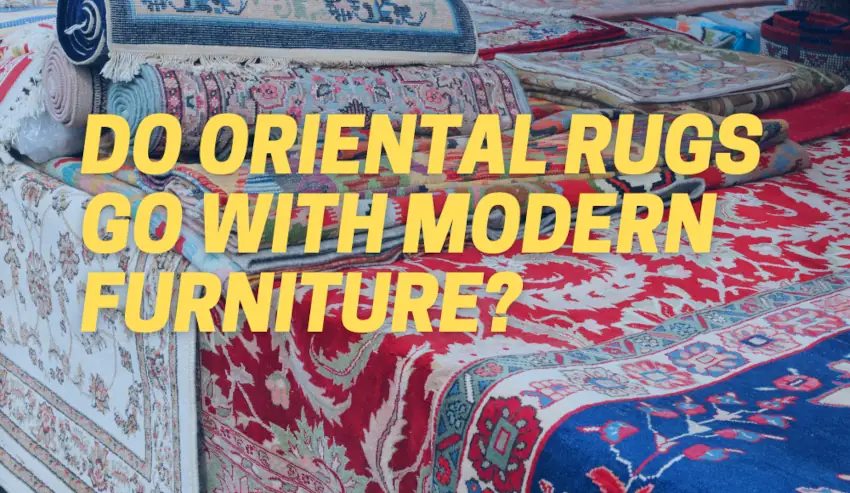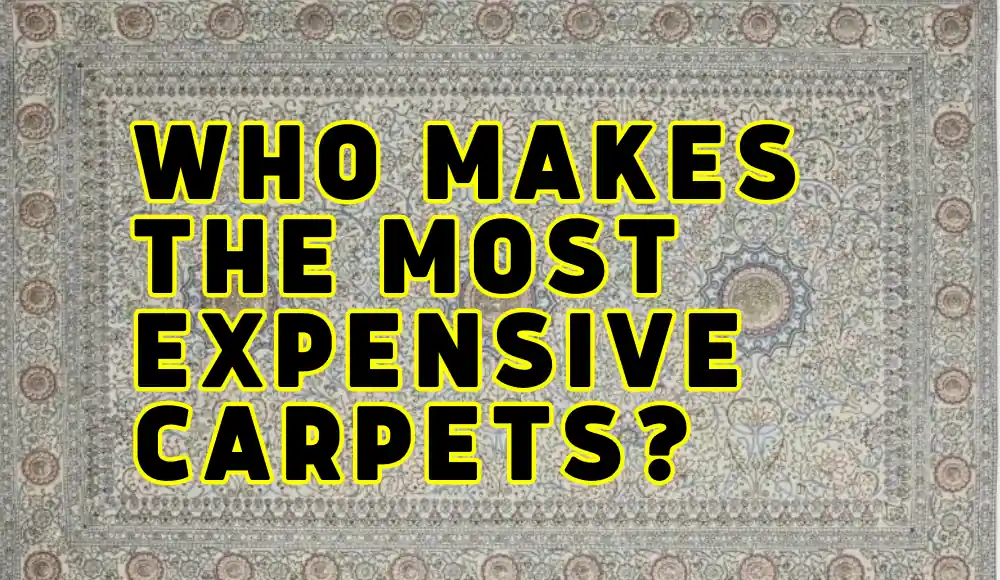Last updated on August 15th, 2023 at 01:29 am
Iranian carpets are some of the most exquisite and prized floor coverings in the world. These hand-woven masterpieces are not only beautiful but also carry a rich history and cultural significance that makes them valuable in both artistic and economic terms.
Whether displayed on the floors of palaces or homes, Iranian carpets bring an air of elegance and sophistication to any space they inhabit.
Brief History of Iranian Carpets: Weaving a Rich Tapestry
The Art and Luxury of Iranian Carpets
What are Iranian carpets called? First things first. Iranian carpets are commonly referred to as Persian carpets, as Iran was historically known as Persia. Persian carpets are known for their intricate designs, high quality, and durability, and are considered some of the finest carpets in the world.
The art of carpet weaving in Iran dates back thousands of years – evidence has been found that suggests the Persians were weaving rugs as early as 500 BC.
However, it wasn’t until the Safavid dynasty in the 16th century that carpet weaving became a well-established industry.
During this time, Persian carpets became highly sought after in Europe and other parts of the world for their intricate designs, bold colors, and durability.
Over time, different regions within Iran developed their own distinct styles – Kashan carpets are known for their floral motifs and central medallions; Isfahan carpets feature intricate patterns with silk highlights; Tabriz carpets showcase precise geometric designs. Today, Iranian carpets are still made using traditional methods passed down from generations past.

Importance of Iranian Carpets in The World Market: From Royalty to Wealthy Collectors
Iranian carpets have been valued throughout history by royalty, wealthy collectors, and art enthusiasts alike. Their beauty is timeless – just like an oil painting or sculpture – making them highly desirable investment pieces that can appreciate over time. In addition to being valuable works of art, Iranian carpets also play an important role in Iran’s economy.
The carpet industry is one of its largest non-oil exports – contributing billions to its GDP each year. Additionally, many weavers rely on carpet-making as their primary source of income, with some families passing down the trade for generations.
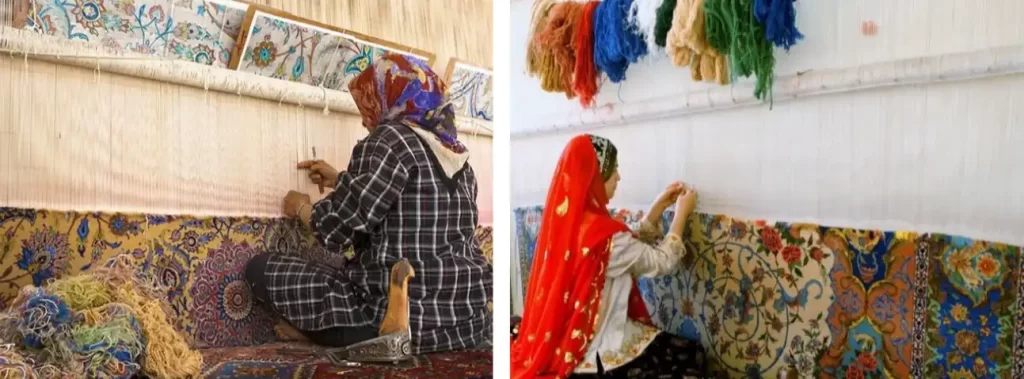
Overall, Iranian carpets are a true testament to the beauty and skill of Persian artistry. From their rich history to their present-day economic significance, these carpets continue to captivate and inspire people around the world.
Top 3 most expensive Iranian Carpets
What are the characteristics of Iranian carpet?
Iranian carpets are known for their high quality and beautiful craftsmanship.
Some of the common characteristics of Iranian carpets include intricate designs, vibrant colors, and durable materials such as wool or silk. They are often hand-knotted by skilled artisans. Iranian carpet types are also considered to be valuable works of art and are highly sought after by collectors and enthusiasts around the world.
The most popular Iranian carpet types are:
Kashan Carpet
The Kashan carpet is one of the oldest and most expensive carpets from Iran.
It originated from the city of Kashan, which was considered to be one of the centers of Persian art and culture.
The history of Kashan carpets can be traced back to the 16th-17th century when they were first produced for royalty and wealthy merchants. One unique feature of the Kashan Carpet is its intricate design.
Iranian carpet design
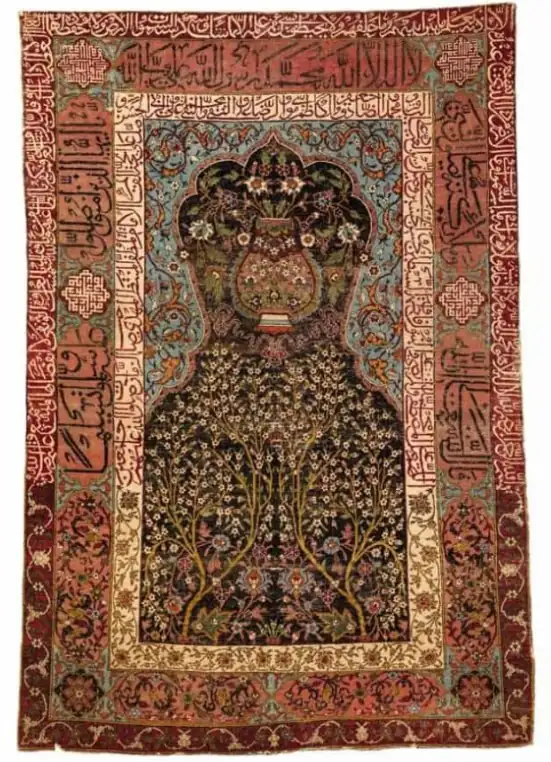
The patterns are highly detailed and often include floral motifs, medallions, and arabesques. The colors used in these carpets are rich and vibrant, adding to their beauty.
Iranian carpet price
The average price range for a Kashan carpet ranges from $5 000 to $50 000 depending on size and quality. Iranian silk carpet price range, the same as the Iranian handmade carpet price, on expert shops and marketplaces ranges from $51 000 to $15 000.
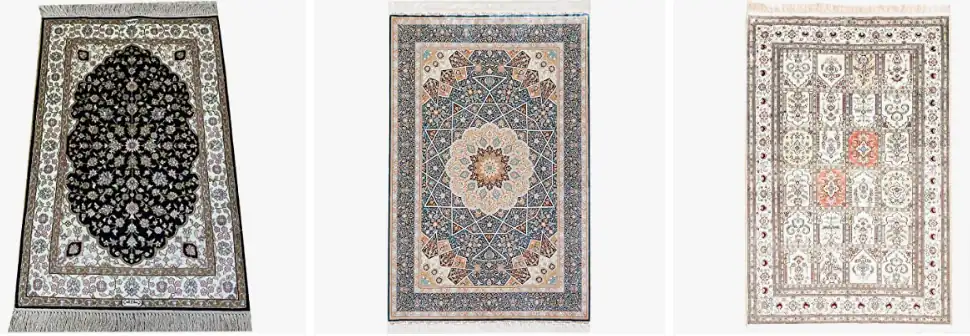
Isfahan Carpet
The Isfahan Carpet is another highly sought-after Iranian carpet known for its exquisite beauty and craftsmanship.
This type of carpet originated in Isfahan, a city located in central Iran with a rich history dating back thousands of years.
Isfahan Carpets are known for their stunning floral designs that often feature intricate weaving techniques such as silk-on-silk or wool-on-silk knots.
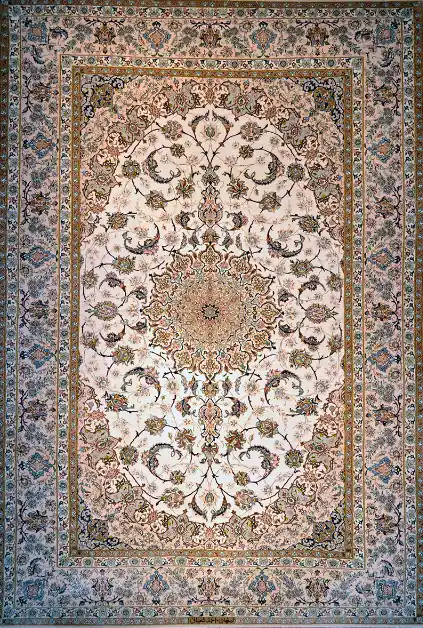
These carpets come in various sizes ranging from small prayer mats to large area rugs that can cover an entire room.
The price range for an Isfahan carpet ranges from $3,000 to $30,000 with some exceptional pieces reaching over $100,000 or even a million at auction. For instance, the 16th-century Isfahan rug was sold at Christie’s auction in 2008 for $4.45 million.
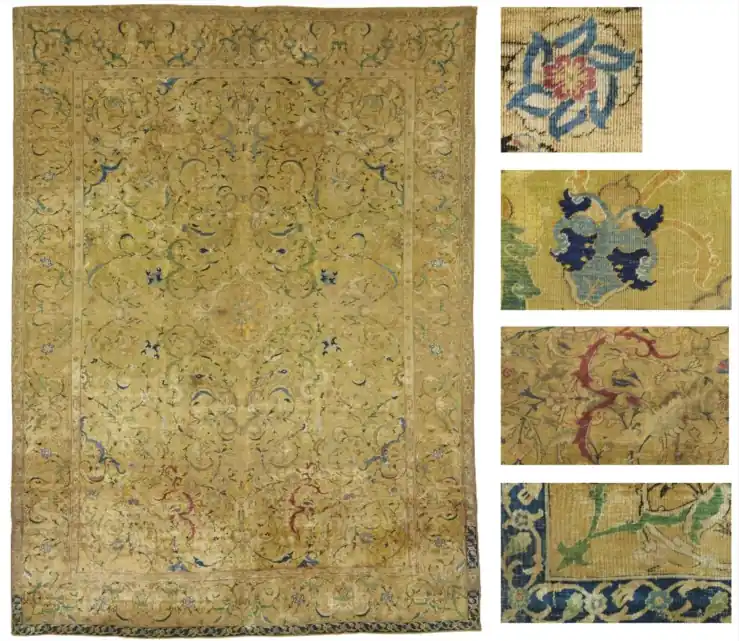
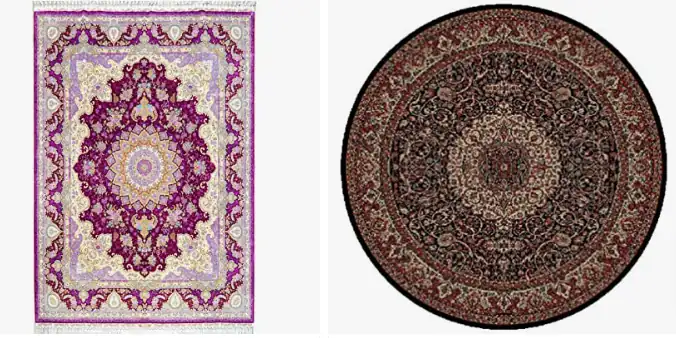
Tabriz Carpet
Tabriz Carpets are considered some of the most beautiful Persian rugs in existence today due to their high-quality materials and craftsmanship techniques employed by skilled artisans.
These carpets originated from the city of Tabriz, which was a center for Persian art and culture for many centuries.
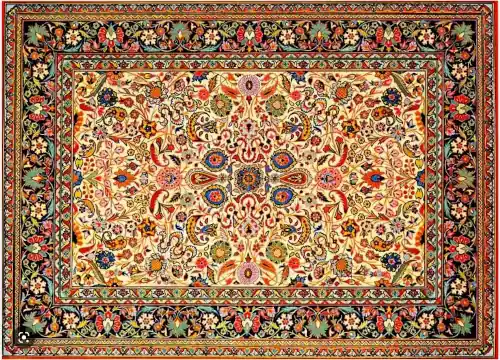
One unique feature of Tabriz Carpets is their intricate designs and patterns, which often include floral motifs, medallions, and arabesques. The colors used in these carpets are rich and vibrant, adding to their beauty.
The price range for a Tabriz Carpet ranges from $2,000 to $50,000 depending on size and quality.
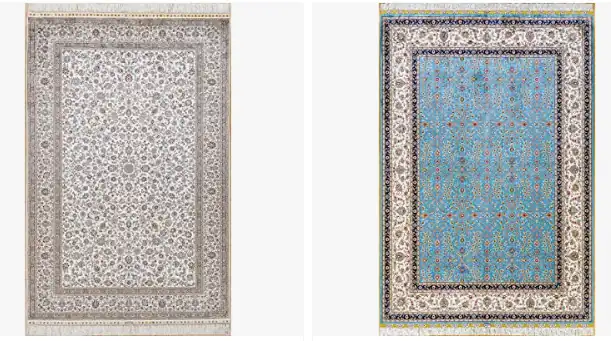
What is the most expensive Iranian carpet in the world?
Despite all the carpet prices mentioned above, none of them compare to the value of the most expensive Persian carpet ever sold (to date).
It is about the Clark Sickle-Leaf carpet – the 17th-century South-East Persia rug that was sold at Christie’s auction in 2010 for a stunning $33.76 million.
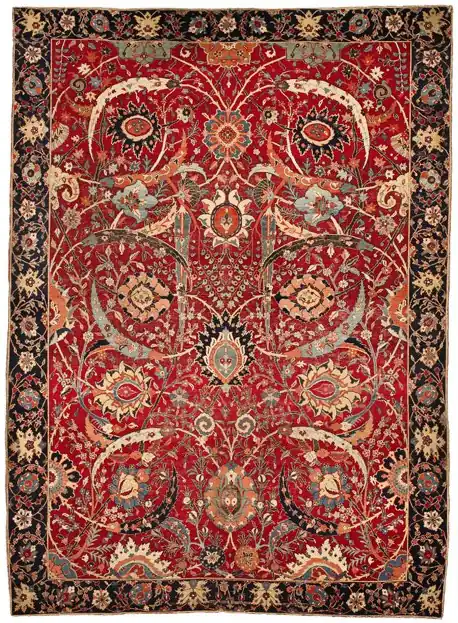
Why are Iranian carpets so expensive?
Factors that contribute to the high price of Iranian carpets:
Quality of materials used in production
The quality of materials used in Iranian carpet production is one factor that contributes to their high price. High-quality wool or silk fibers are carefully selected by skilled artisans who have been trained in traditional weaving techniques passed down from generation to generation.
Handmade craftsmanship techniques used by artisans
Another factor that contributes to the high price of Iranian carpets is the handmade craftsmanship techniques employed by skilled artisans. These techniques involve intricate knotting methods that take months or even years to complete depending on size and complexity.
Rarity or uniqueness of design or pattern
The rarity or uniqueness of design or pattern is another factor contributing to the high price of Iranian Carpets. Some designs are considered rare due to their limited availability while others are unique due to their intricate weaving techniques making them highly valued in today’s market.
Other notable expensive Iranian Carpets worth mentioning
Nain Carpet
The Nain carpet originated from the town of Nain located in central Iran known for producing some exceptional silk-on-cotton Persian rugs with intricate floral designs often featuring a central medallion surrounded by scrolling vines and palmettes.
The Nain Tuteshk type is a relatively uncommon type of Nain carpet that is highly coveted due to its exceptional craftsmanship.
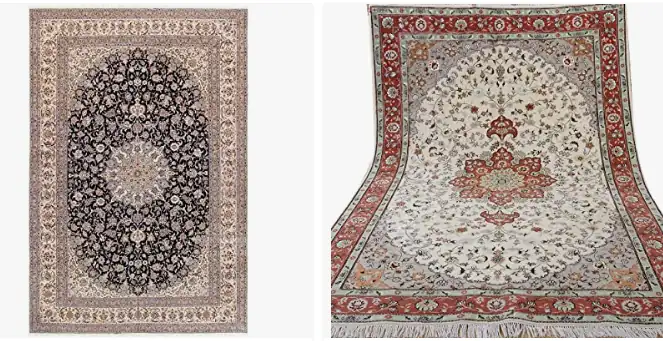
Qom Silk Carpet
The Qum or Qom silk carpet is a high-quality Persian rug that originated in the city of Qom located in central Iran. These carpets are known for their intricate designs and use of high-quality silk fibers making them highly sought after by collectors.
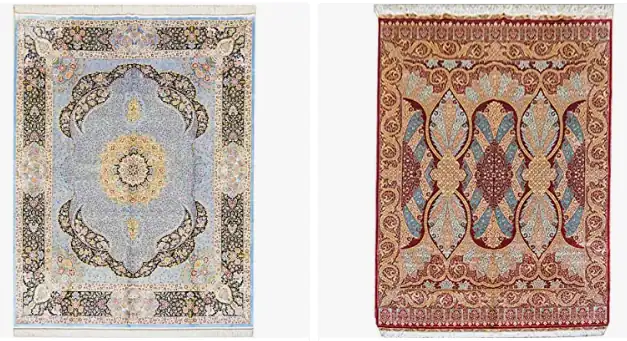
Mashad Carpet
The Mashad carpet is one of the most expensive Persian carpets from Iran due to its quality and rarity. The city of Mashhad located in northeastern Iran is renowned for producing some exceptional wool-on-cotton rugs with intricate designs often featuring floral motifs, medallions, and arabesques.
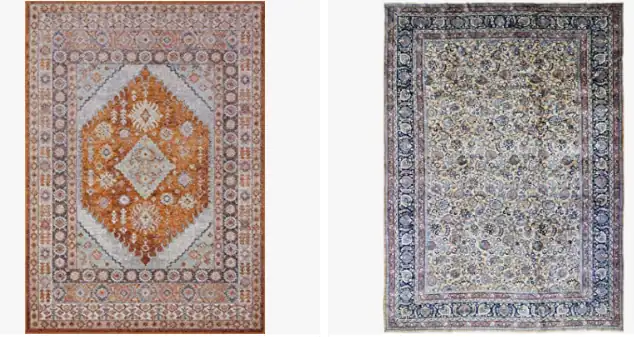
Conclusion
Iranian Carpets are highly valued due to their quality materials, skilled craftsmanship techniques employed by artisans, and rarity, or uniqueness of design or pattern.
What is the price of Iranian handmade silk carpet?
The top three most expensive Iranian carpets include Kashan Carpet, Isfahan Carpet, and Tabriz Carpet with prices ranging from $3k-$100k.
Other notable Iranian Carpets worth mentioning include Nain, Qom Silk, and Mashad rugs. Despite their high price tags, these carpets remain highly sought after by collectors worldwide for their exquisite beauty and cultural significance.
